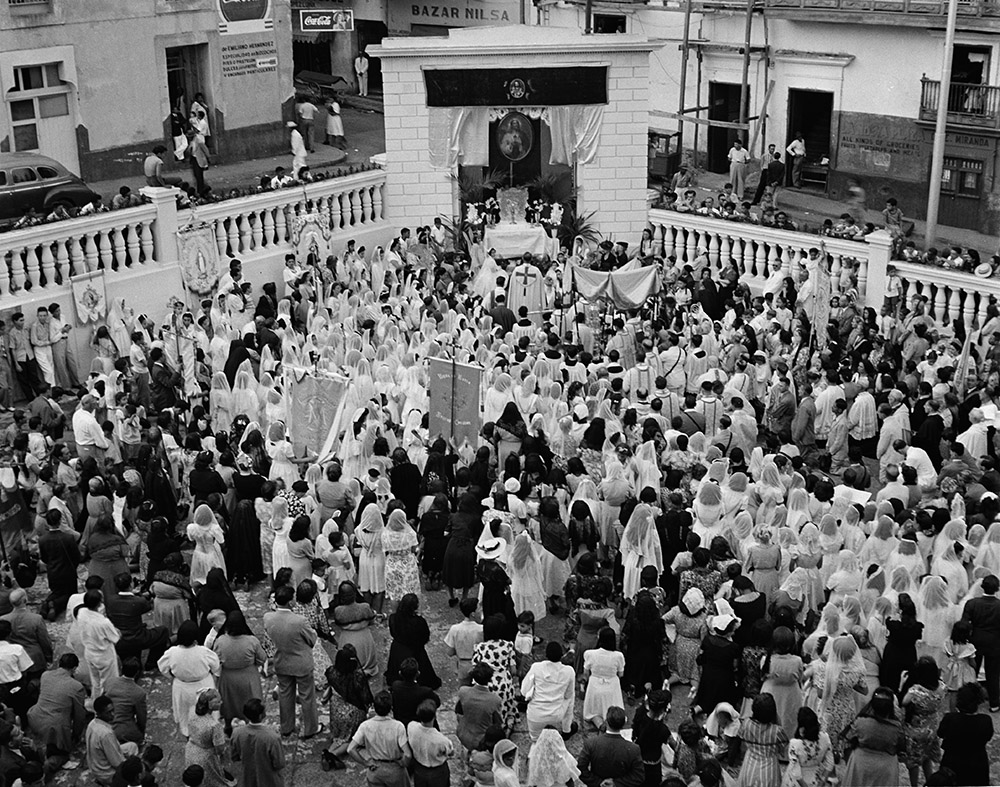
THE BRONX — The Spanish-American War 125 years ago, although brief, spun confusion and upheaval for Catholics on the Caribbean island of Puerto Rico.
The United States originally fought to support independence for Cuba. When the shooting stopped four months later, Spain abandoned its colonies in the Pacific and the Americas.
The war officially ended in August 1898 with the Treaty of Paris.
Cuba got its independence, while the U.S. won control of former Spanish holdings in the Philippines, Guam, and Puerto Rico.
Spain, a Catholic monarchy, was forced to end its patronage of Church institutions in its former colonies.
The late historian, Father Edward Berbusse, wrote that the void was filled by a “Yankee-Americanism that was dominantly Protestant and wedded to the proposition that the Church must be separated from the state.”
“It was a rugged wrenching,” wrote Father Berbusse, a Jesuit who was on the faculty at Fordham University. “That brought the Puerto Rican Church from a position of dependency to that of autonomy and self-support.”
But other problems also festered in the new U.S. territory.
Archbishop Roberto Gonzalez Nieves of San Juan has often lamented that the transfer of power 125 years ago also brought a wave of anti-Catholic sentiment in Puerto Rico.
Subsequently, U.S. officials banned Catholic processions and feast-day festivals celebrated since Spanish colonization in Latin America more than 500 years ago.
Father Jorge Ramirez, a Piarist priest from Puerto Rico, recently described how priests fled the island during the Spanish-American War to escape persecution.
But, he added, there already was a shortage of priests on the island at that time. Harsh mountainous terrain and poor roadways hindered clergy trying to reach far-flung areas.
“It was a very rough time because there weren’t any priests around to take care of the souls,” said Father Ramirez, who is from San Juan.
“I know,” he continued, “my great-grandparents suffered to remain in the faith while not being allowed to have processions and all these other things.”
Father Ramirez, ordained in 2022, is a graduate of St. Joseph Seminary and College, Dunwoodie, Yonkers. He now serves at St. Helena Church in the Bronx.
One of his former seminary professors, Father Michael Bruno, explained that anti-Catholicism in America was a vestige of the Protestant Reformation of the 16th century that carried into British colonies.
“In the colonial charters and laws, you have a direct prescription against Catholic worship and against the ministry of any Catholic clergy,” he said.
Father Bruno, a professor of Church history, noted that Catholic participation in the American Revolution “helped to move us forward from the English colonial anti-Catholicism.”
Some fighters battling the British were French Catholics. Others were Catholics from Maryland, like those who fought in the Battle of Brooklyn. Maryland was the only American colony where Catholicism was allowed by Great Britain.
Still, Father Bruno said, “clearly there remained an anti-Catholic sentiment.” This attitude persisted when immigrants, many of them Irish and German Catholics, swelled the American population.
It continued through the start of the 20th century while the U.S. military managed Puerto Rico.
Devoid of Catholic clergy, Puerto Ricans witnessed a rapid growth of Protestant denominations on the island after the war, Father Ramirez said.
But, he said, the few remaining priests recruited and trained a cadre of laymen to cover the island, preaching and teaching, including the remote mountains.
These so-called “Hermanos Cheros” kept the Catholic religion going until priests returned to Puerto Rico, Father Ramirez said.
“And thanks to them,” he said, “we still have the Catholic Church in Puerto Rico.”
Father Berbusse also described how the Spanish crown left no deeds or titles proving ownership of Church property.
Consequently, Catholics still in Puerto Rico had no documents proving their rights to retain churches, schools, and cemeteries. The U.S. government wanted control of these institutions under the notion that they were spoils of war.
“The Catholic Church had to file several lawsuits against the United States in American courts in order to maintain property,” Father Bruno said of this dilemma. “There was no love for the Church in that sense.” Ultimately, the Church prevailed in the litigation.
As years passed, governing authorities switched from U.S. military officers to civil governors.
The approval of a Puerto Rican Constitution in 1952 returned religious freedoms to the island. Archbishop Gonzalez has called this a happy turning point that ushered the return of public processions and festivals.
Now, more than 70% of Puerto Ricans are Catholic, according to polling.
Puerto Ricans now debate among themselves whether they should seek statehood or actual independence from the U.S.
Meanwhile, they also face the fallouts from political corruption, economic upheavals, and natural disasters like the hurricanes that have pummeled the island in recent years.
Father Ramirez said he was educated in public schools. But while catechesis grounded him in the faith, it is only recently that he has started to explore Church history in Puerto Rico.
He said the response of the holdout priests and the Hermanos Cheros after the Spanish-American War can inspire anyone from the island to persevere.
“It is so important to know all this,” Father Ramirez said. “And for me, it’s very important to spread it, so others also know about it.”

Another fascinating article by Senior Reporter Bill Miller!